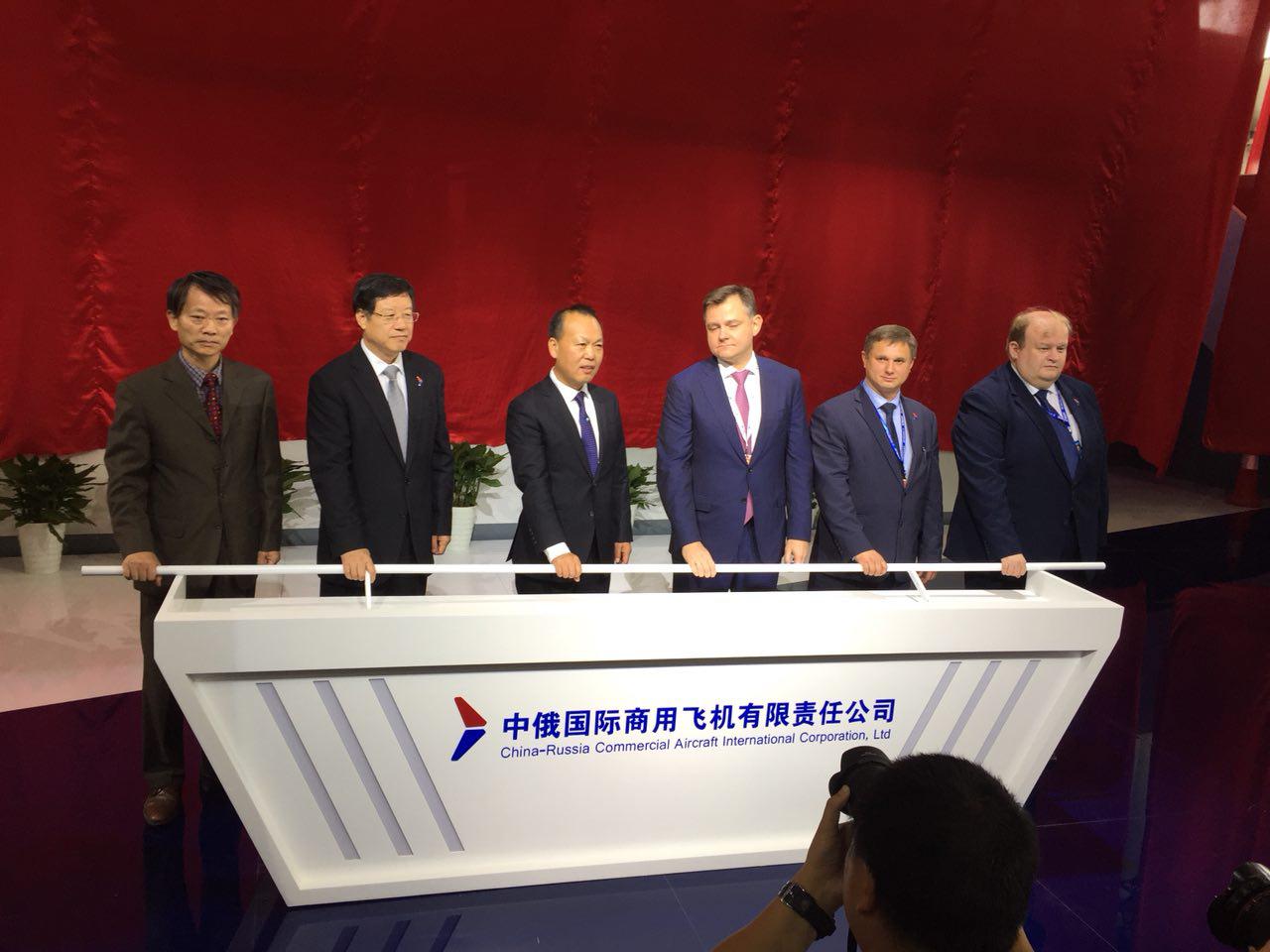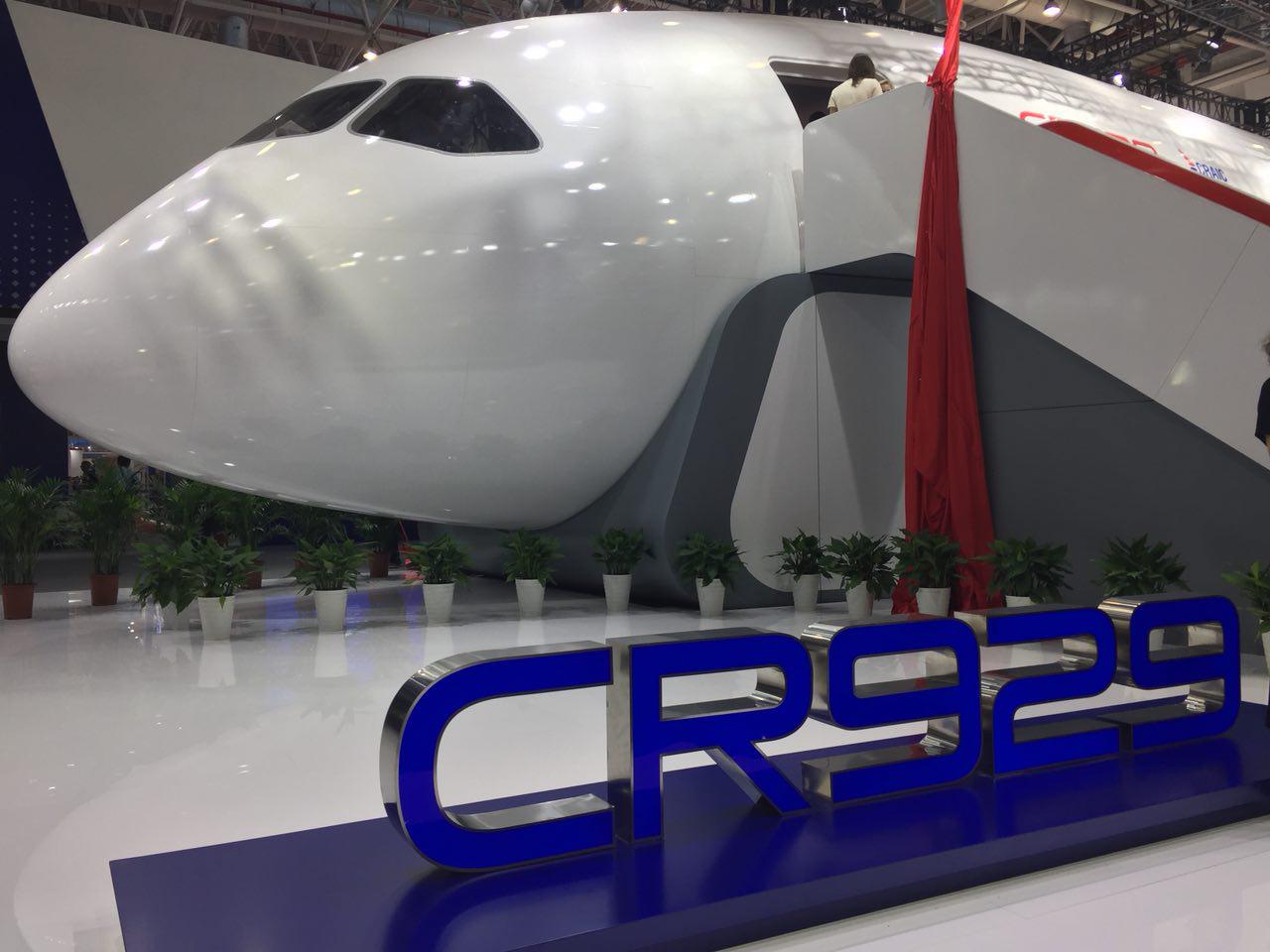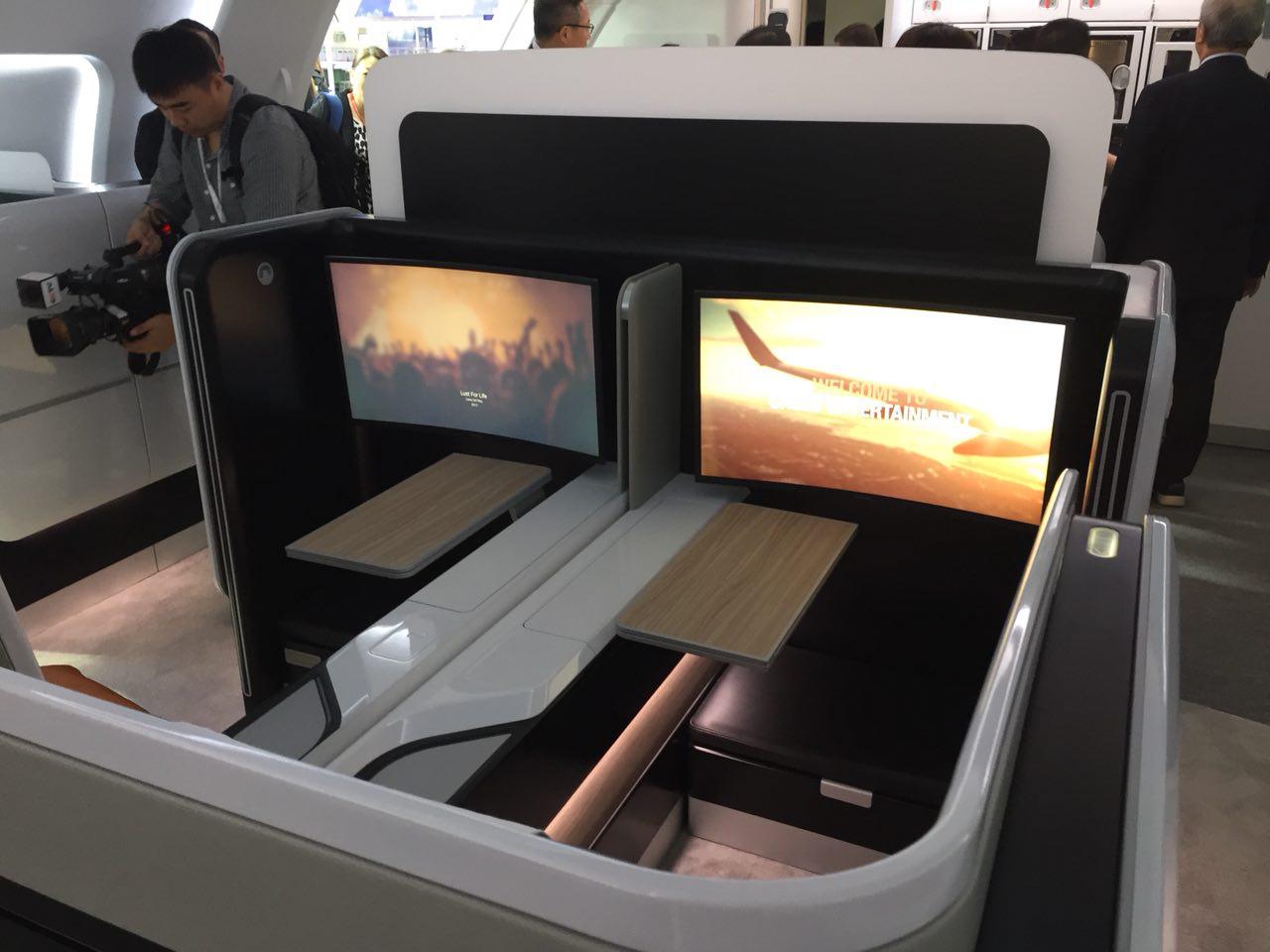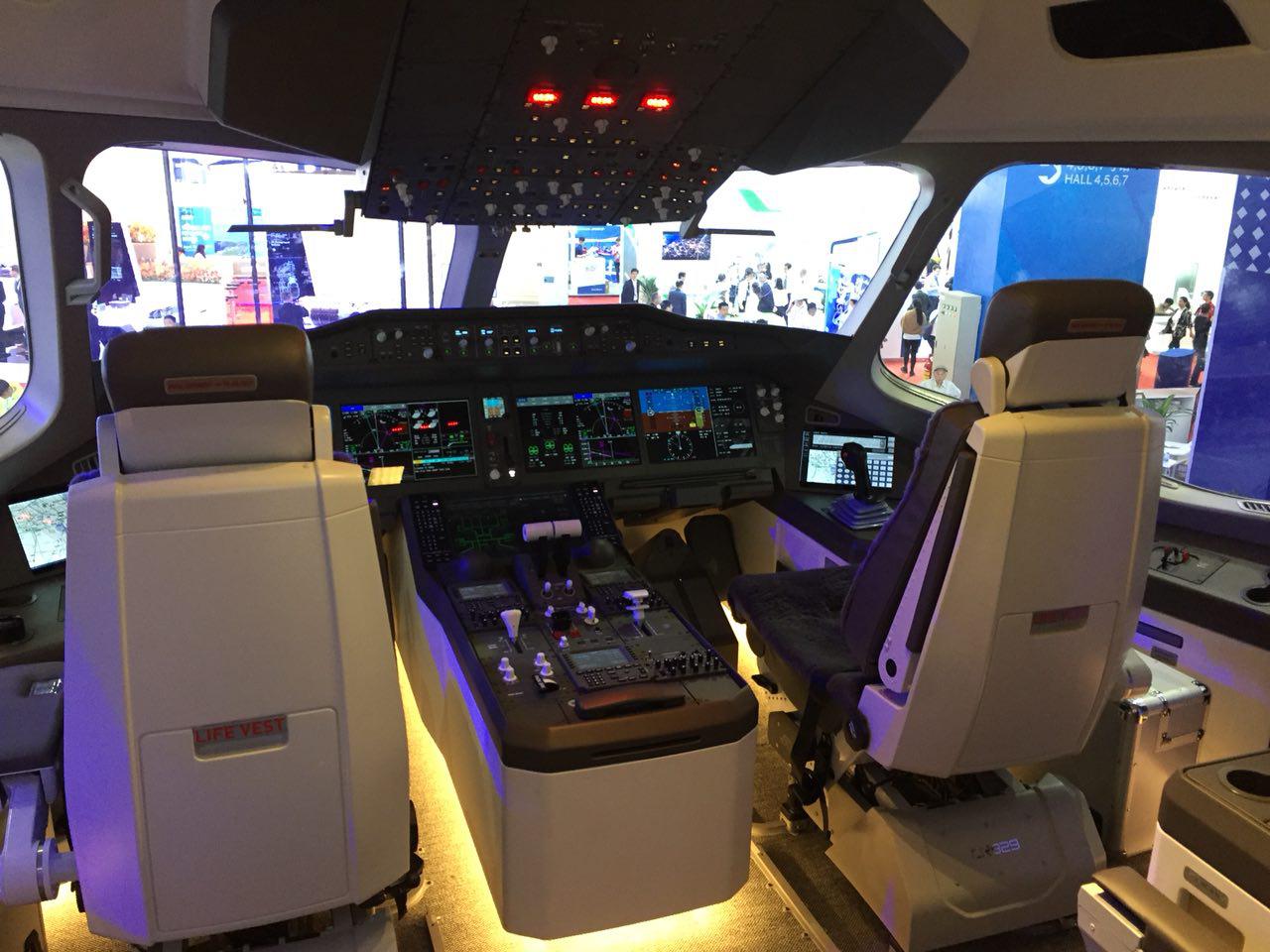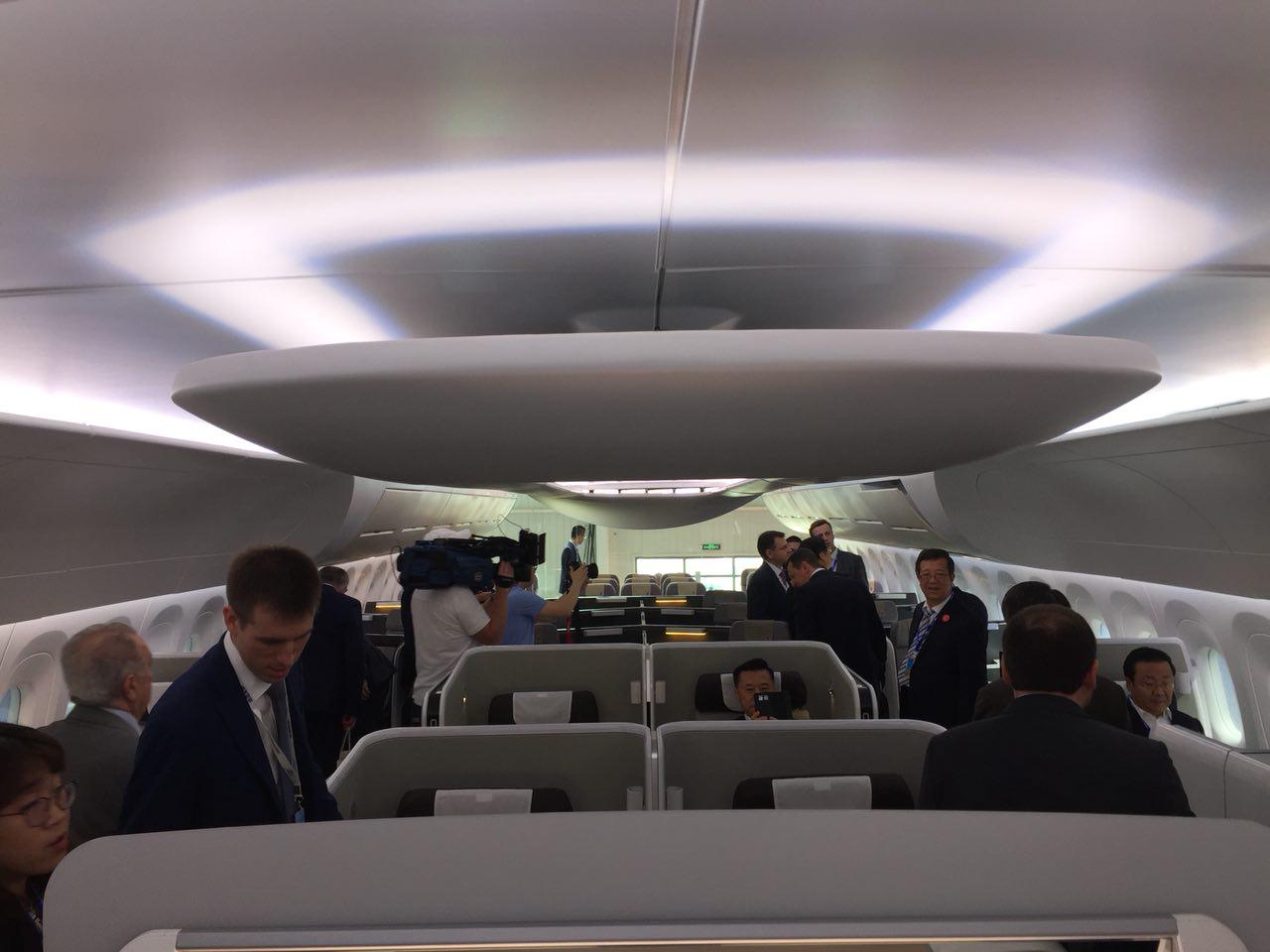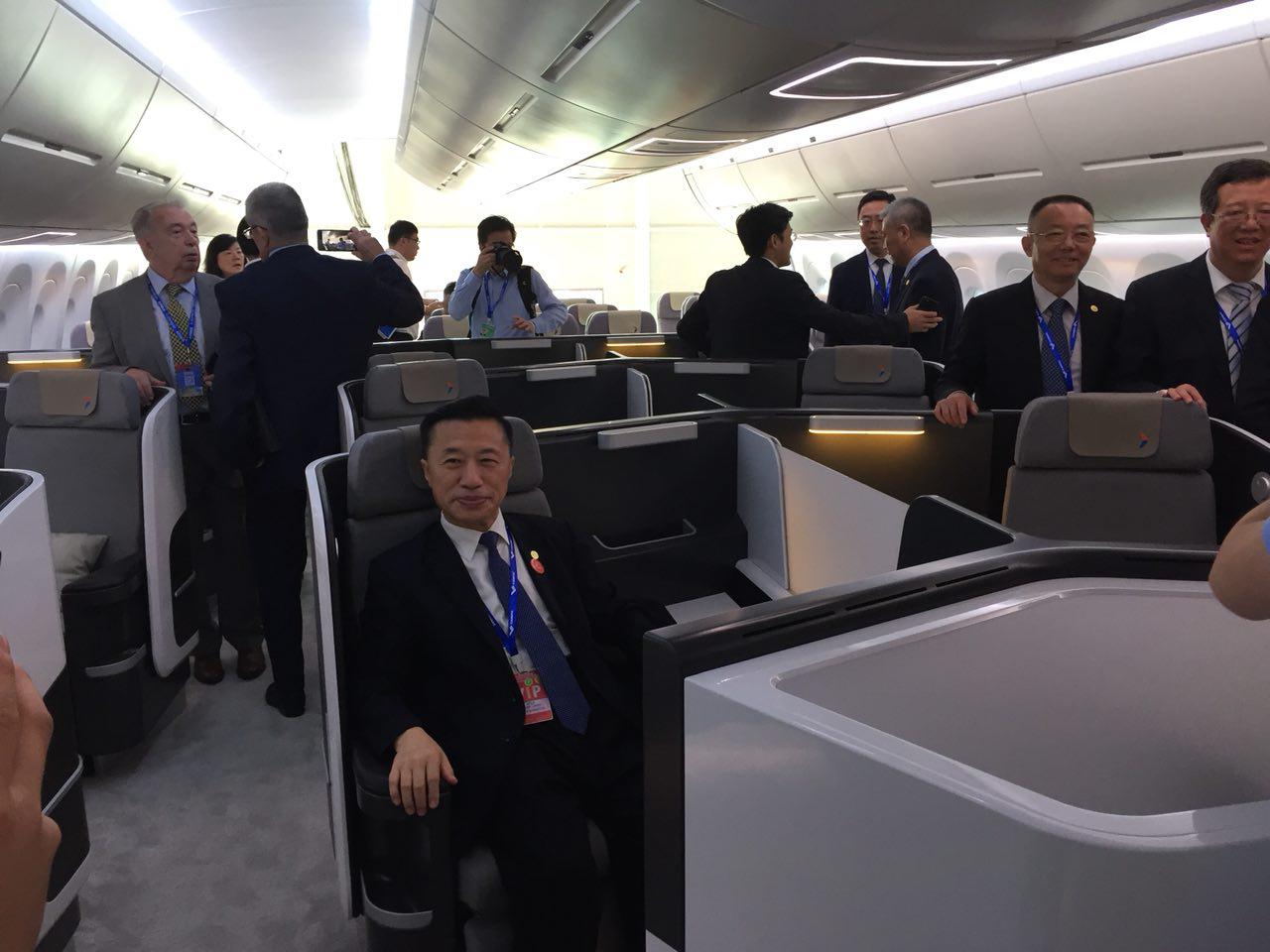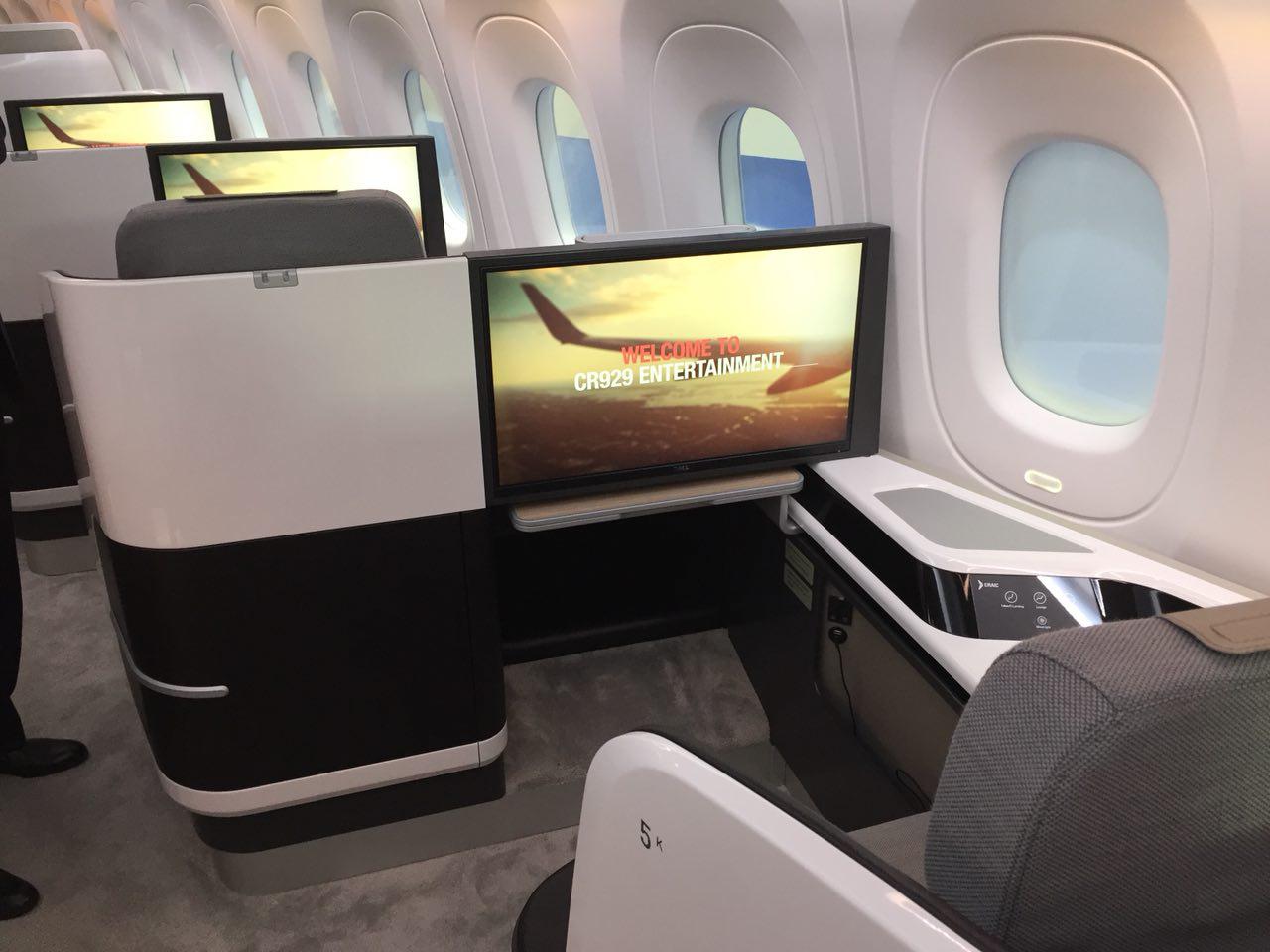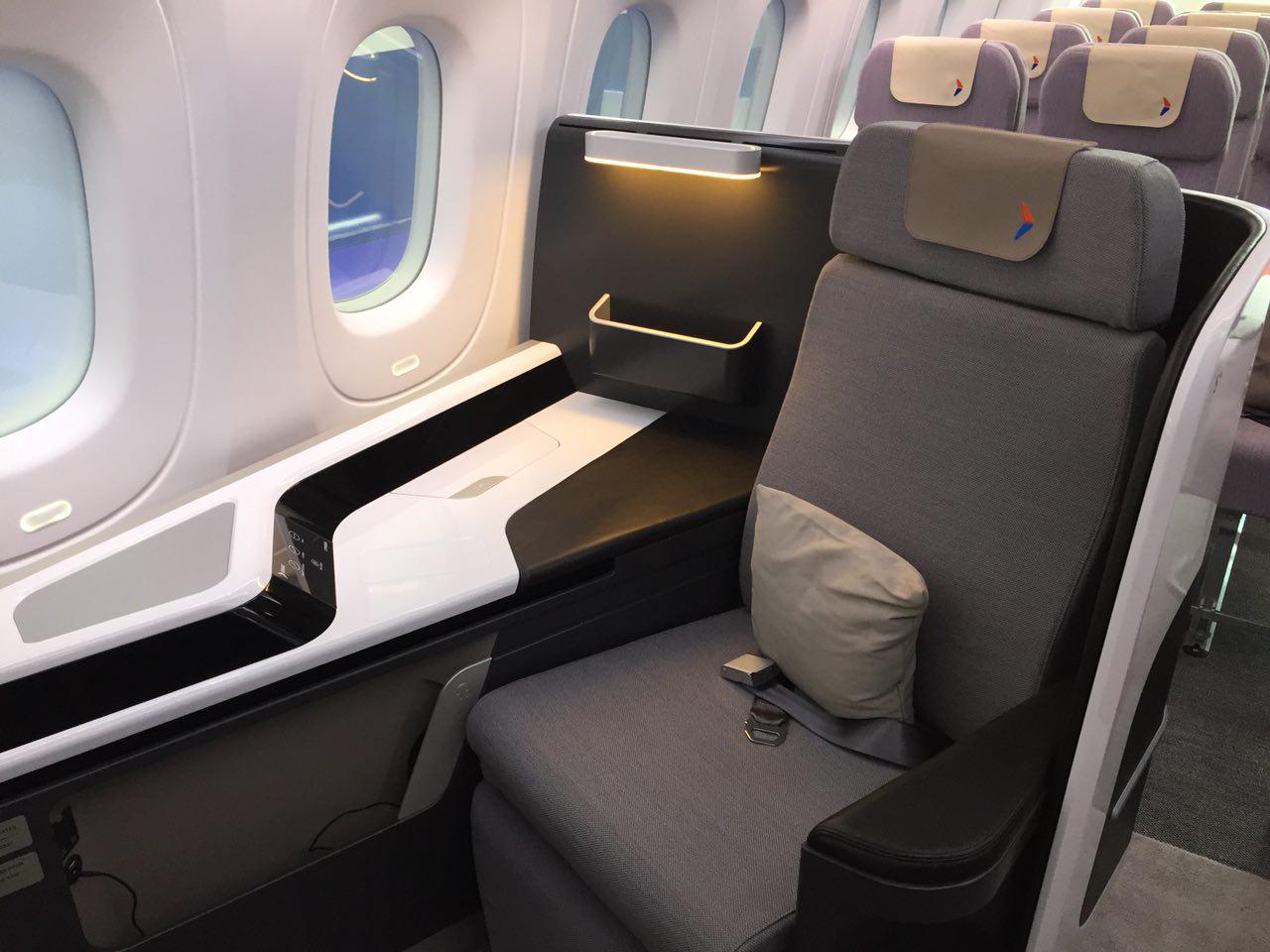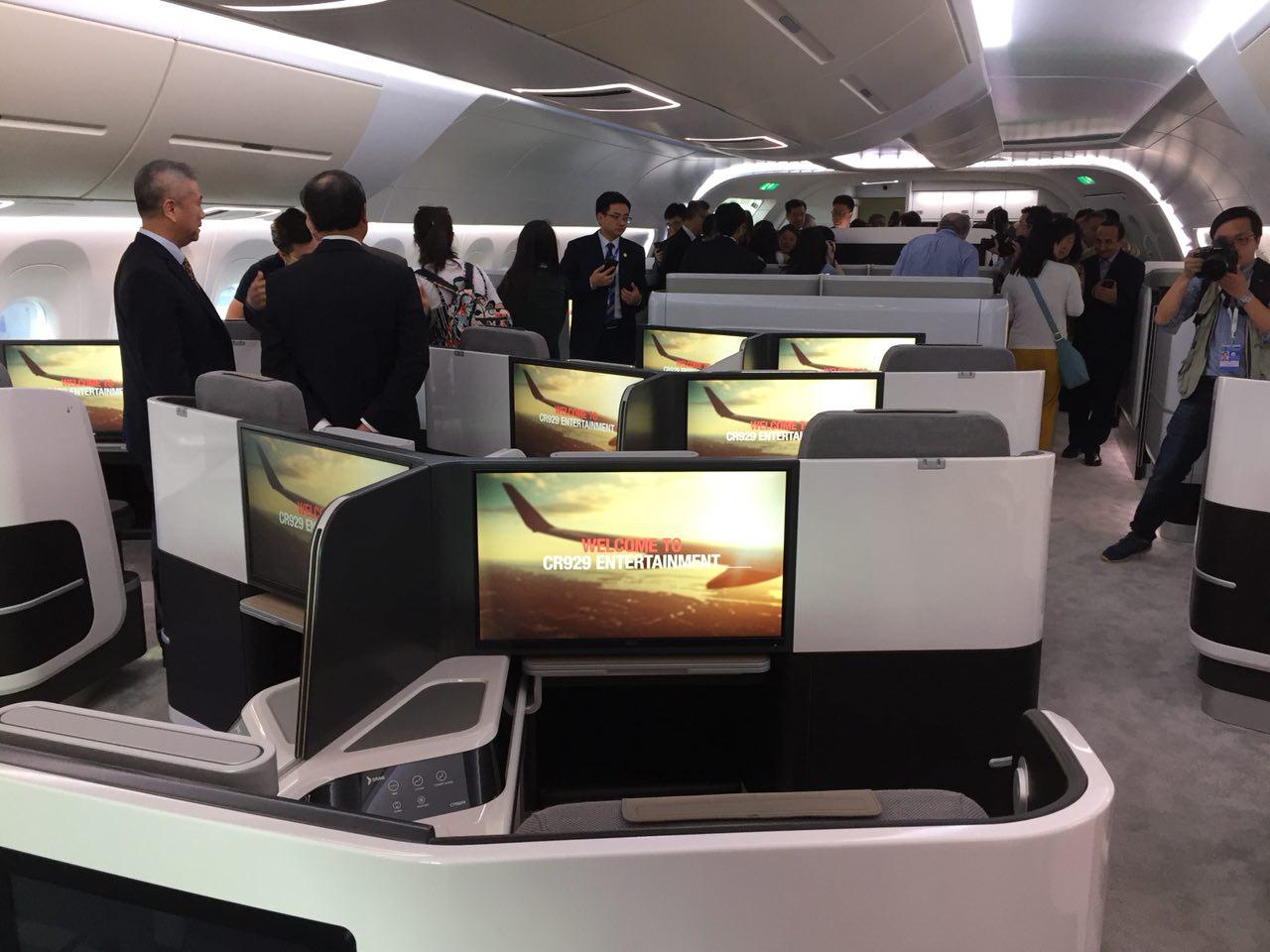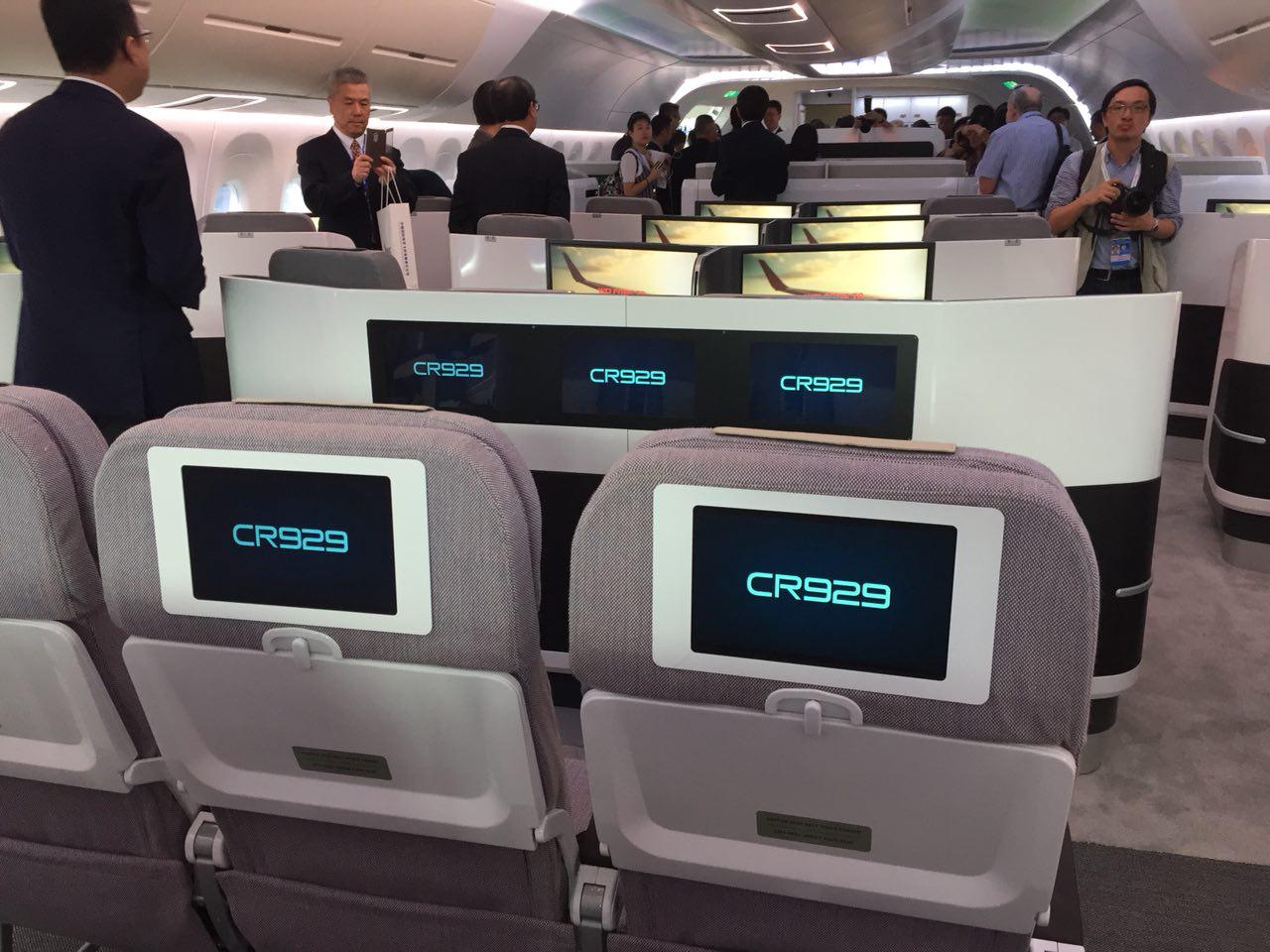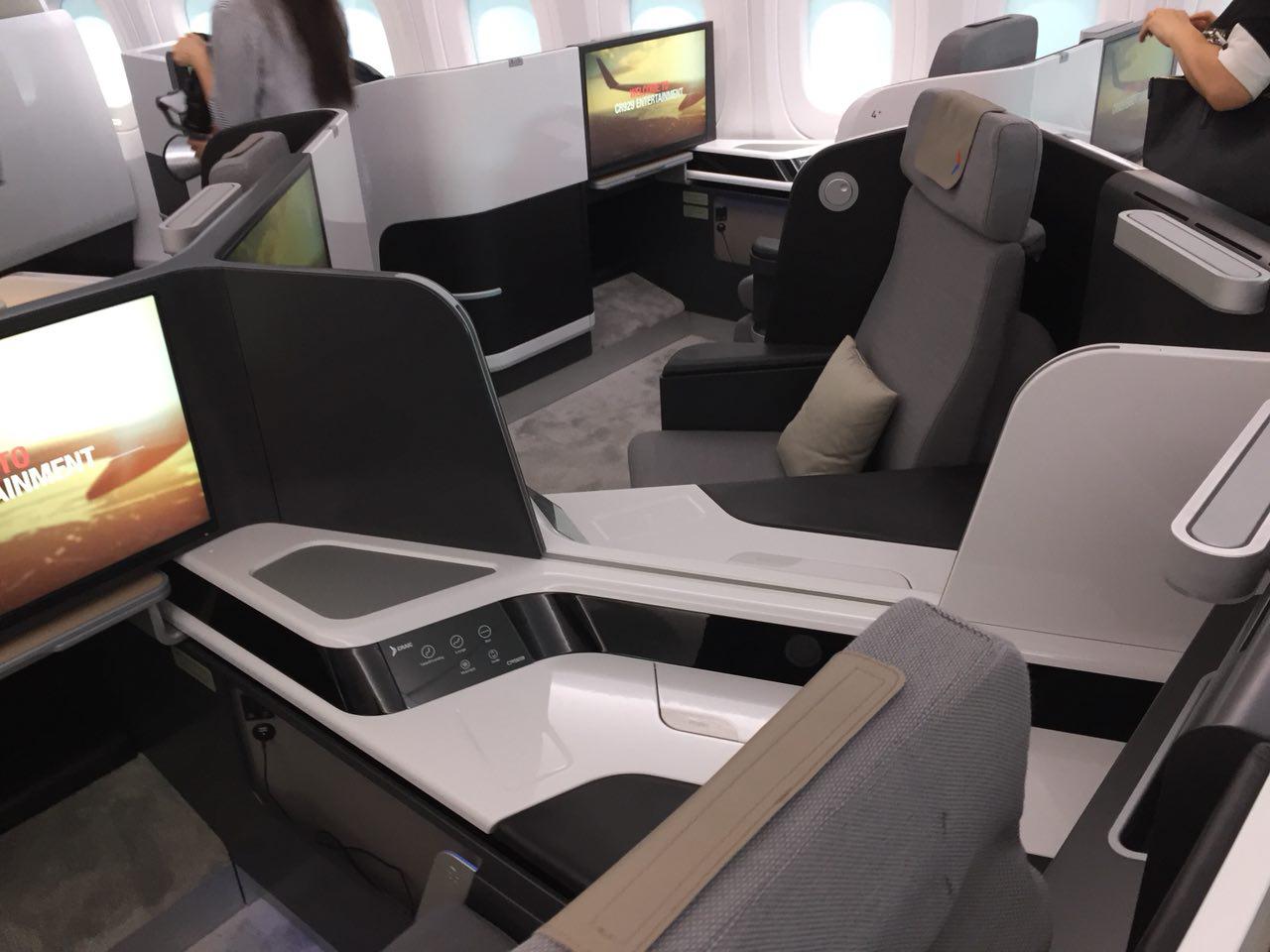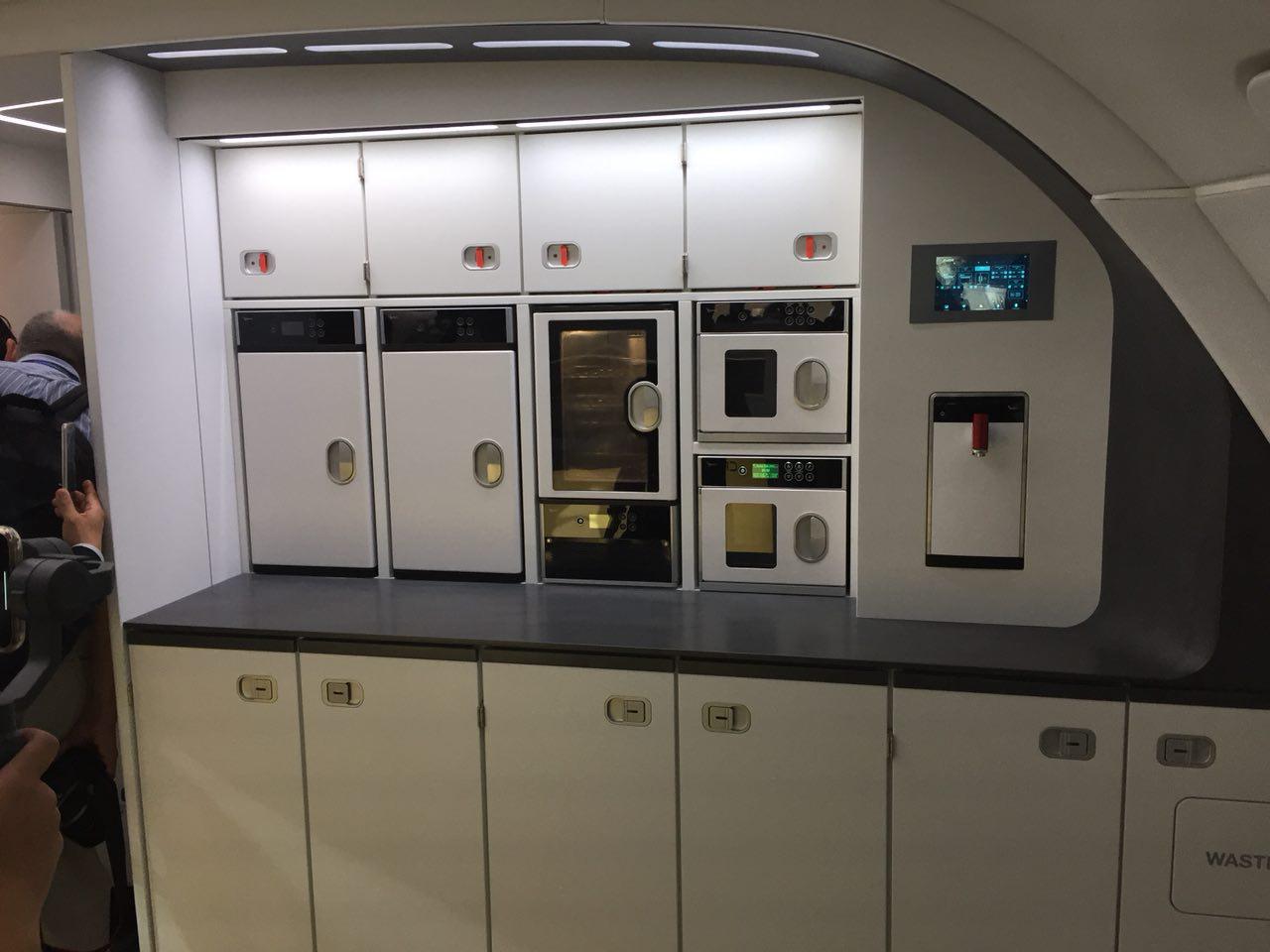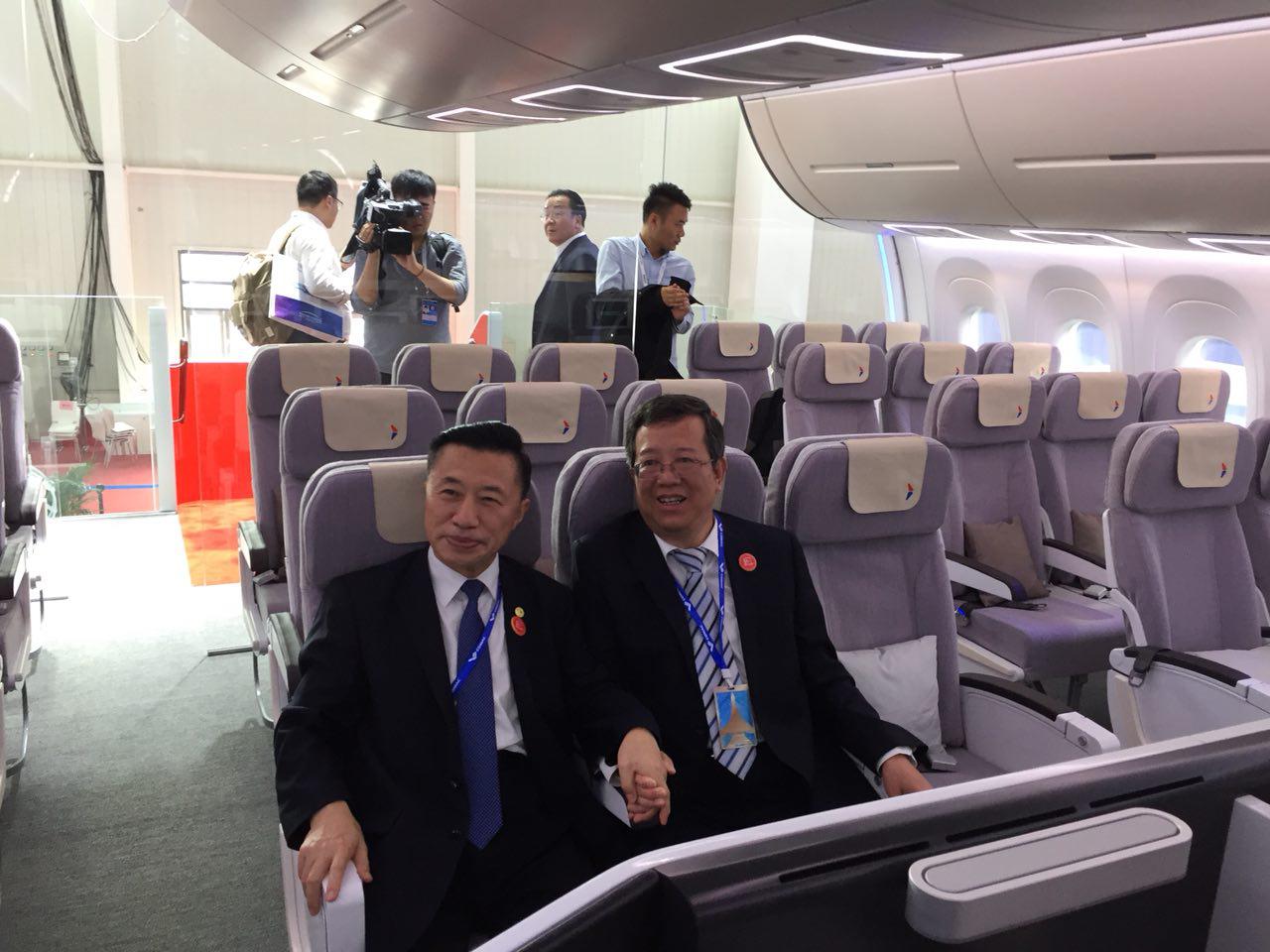Full sized mock-up is a concept of three-class LOPA: first class, business class and economy class, as well as CR929 flight deck. The mock-up is of 22 meters length, 6.5 meters height and 5.9 meters width. The cabin is equipped with 2 rows of first class, 3 rows of business class, 4 rows of economy class, including advanced entertainment system and distinctive interior decorations of Chinese and Russian style, integrating comfort and advancement. It also reflects the concept design of CR929 aircraft's cockpit. The mock-up makes it possible to showcase to the potential customers and future passengers the advantages of comfortable cabin in the economy class in comparison with same class aircraft.
Flight crew and cabin crew will entirely enjoy the comfort of their working stations as well.
CR929-600 basic version in three-class layout will be capable to carry 280 passengers at a distance of 12.000 km. Aircraft family will include a modification with stretched fuselage (CR929–700) and cut fuselage (CR929–500).
Project history
The aviation industries of Russia and China represented by PJSC UAC and COMAC Companies are working together on the project of Long-Range Wide-Body Commercial Aircraft CR929. The countries share investment, technological and time risks, combining the intellectual, technological and other resources to create the aircraft in a very competitive market.
The operator of CR929 program is the Shanghai-based joint venture between PJSC UAC and COMAC – CRAIC.
Russia and China jointly work on the Program since 2012.
Implementation of wide body aircraft creation program requires large investment and a confirmed market.
Memorandum of Understanding
In April 2012, PJSC UAC and COMAC Corporation signed a Memorandum of Understanding whereunder they began their joint work to justify the possibility of implementing a program for creation of a family of perspective long range wide body commercial aircraft.
Memorandum of Cooperation
In May 2014, PJSC UAC and COMAC Corporation signed a Memorandum of Cooperation regarding the program for new passenger long range wide body commercial aircraft.
Intergovernmental Agreement
In June 2016, the Agreement between the Government of the Russian Federation and the Government of the People's Republic of China on cooperation in the joint implementation of the Program for Development, Production, Commercialization and After-Sales Support of the Long Range Wide Body Commercial Aircraft and the Family Created on its Basis was signed in Beijing.
Joint Venture
In December 2016, the Board of Directors of PJSC UAC approved the participation of the corporation in the establishment of the Joint Venture (JV) with COMAC corporation. The joint venture will be based in Shanghai (China).
The date of the Joint Venture registration is May 12, 2017.
On 22 May, 2017, solemn opening of the Joint Venture took place in Shanghai. The JV was opened by the Presidents of PJSC UAC and COMAC.
The Name of the JV is China-Russia Commercial Aircraft International Corporation; CRAIC.
The shares of PJSC UAC and COMAC in the Joint Venture are equal, amounting to 50% for each.
JV Top Management:
The General Director is Guo Bozhi. In COMAC Corporation, he holds the position of the Director of Long Range Wide Body Commercial Aircraft Program.
The JV Board of Directors is composed of 8 members, 4 from each of the parties.
The fields of JV activities are: production, sales, after-sales service, marketing, business planning and program management.
Project Name
On 29 September 2017, the aircraft family was officially named in Shanghai. It got the name of CR929. The long-range wide body commercial aircraft basic version will be known as CR929–600, the shortened version will be called CR 929–500, and the stretched version will go by the name of CR 929–700.
Latin letters C and R denote the project participants: С – China, R – Russia. CR also appear to be the first two letters in the name of the Sino-Russian joint-venture CRAIC.
In Chinese culture 9 means loyalty and 2 means reciprocity and symbolize partnership and creativity.
Current status of the program, development terms
In 2017, the Long-Range Wide-Body Commercial Aircraft Program passed the Gate 2 milestone, at which the technical concept of the CR929 family was adopted.
The program is currently at the stage of conceptual design and supplier selection procedure. By the end of this stage (Gate 3 expected in 2019), the final shape of CR929 aircraft will be formed.
This stage will comprise of development of requirements to the aircraft systems, as well as preparation and distribution of RFPs to the potential suppliers and upon further obtainment of the received proposals the Short list is going to be finalized. Apart from that it’s also necessary to outline the production cooperation, to develop the system of aftersales support and sales strategy.
Estimate of global demand for RLWBCA
According to UAC/COMAC forecasts, in 2023-2045 the world will require 7 200 aircraft in LRWBCA segment. Among them, 20% of demand will accrue to the market of partner nations (with 15% falling on China and 5% on Russia) and 28% will accrue to other Asia-Pacific countries.
The program will rely on the participating countries’ home markets as the starting ones.
Wide body aircraft occupy a special place in the global commercial aviation market. In quantitative terms, the global share of the wide body aircraft is less than 20% of the total number of all types of commercial aircraft. However, the aggregate market value of all wide body aircraft is more than 50% of the market value of all types of commercial aviation aircraft.
Market Positioning
Based on the interviews with airlines and leasing companies, UAC and COMAC have established the basic requirements to be met by the new wide-body aircraft: the advantage of economic efficiency of operation; improved fuel efficiency, improved aircraft maintenance, guarantees of flight performance and takeoff and landing characteristics; availability of choice of two power plants from two suppliers. This will allow the potential customers to get the best prices for the acquisition and maintenance of the power plant.
The additional requirements are as follows: environmental friendliness, enhanced comfort, improved quality of entertainment systems on board the aircraft, broad capacities for cargo and their affordability, as well as the need for international certification in addition to certification in the Russian Federation and China.
Advantages over competitors (Boeing 787 and Airbus A350)
- The required 10-15% advantage regarding operating expenses per seat;
- The required 15-18% advantage regarding fuel efficiency per seat;
- The best offer regarding comfort - wider fuselage;
- The use of modern technologies allows to improve the aerodynamic quality and improve the aircraft's weight efficiency. Composite materials account for more than 50% of the airframe structure;
- Philosophy of the advanced man-oriented cockpit, maximum automation.
Design Works
The potential customers will be offered a family of 3 configurations: basic, stretched, shortened. The main characteristics of the basic version of new aircraft are as follows: passenger capacity is 280 seats in a standard three-class layout, range is about 12 thousand km.
Work-sharing with regard to aircraft components has been assigned as follows.
Russian party is responsible for the wing, Chinese for fuselage.
Power Plant System
On May, 30 2018 China-Russia Commercial Aircraft International Corporation (CRAIC) has received answers to previously distributed RFPs from 7 potential suppliers of Power Propulsion Systems (PPS). These 7 potential PPS suppliers include companies from Russia, China, USA and Europe.
CRAIC’s joint Russian-Chinese team of different specialists in design, suppliers’ management and aftersales has proceeded with a detailed analysis of answers to RFPs and has been preparing an integrated assessment of proposals submitted by the suppliers. This activity is expected to be completed by the end of 2018 and thus the companies to join the next stage consisting in pre-contract activity will be defined.
Work with the suppliers
RFI stage has been completed in 2017. We have received the answers from the potential suppliers after the distribution of the RFPs and reviewed them. The activities performed within this stage have provided the insight into the existing competences and capabilities of companies intending to participate in CR929 Program.
In December of 2017 RFP stage has started, they have been distributed among the suppliers of aviation systems and suppliers.
The parties have been working on defining the requirements to the aircraft’s systems, they have been also working with potential systems suppliers. In July CRAIC issued an RFP to potential landing gear suppliers. The list included companies from Russia, China and Europe. RFPs for other systems suppliers are being also prepared.
Unique technologies and design solutions CR929
New composite materials will be widely used in the aircraft design, it is planned that they will amount to 50% of the airframe structure.
New aerodynamic solutions are also expected. The CR929 high-aspect-ratio wing will feature sharklets that will allow to minimize drag and optimize fuel-burn, achieving better economic and environmental performance comparing with existing competing aircraft.
The economic efficiency of the aircraft will also be achieved by lowering maintenance costs. An information system that will track the state of the airframe and all of the aircraft’s systems is envisioned. This will also allow for increased safety of the aircraft’s operations.





